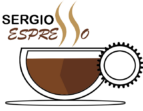## How to Design a Vacation Planning App: Acing the FAANG Interview
**Introduction**
In the fast-paced world of product management, preparation is paramount. The FAANG interview, in particular, tests your ability to apply structured thinking to solve complex problems. As you navigate the exciting yet challenging path of interviewing with top tech companies, mastering the art of dissecting and responding to typical interview questions becomes crucial. In this blog post, we’ll delve into the pertinent question: “How would you design an app for planning vacations?” This seemingly simple question reflects the daily reality of a product manager: understanding users, identifying problems, and designing innovative solutions.
**Detailed Guide on Framework Application**
**Choosing the Right Framework**
For a product design question like this, the CIRCLES Method™, devised by Lewis C. Lin in “Decode and Conquer,” provides a rigorous structure to approach the problem. It stands for Comprehend, Identify the customer, Report the customer need, Cut through prioritization, List solutions, Evaluate tradeoffs, and Summarize recommendations.
**Step-by-Step Guide on Applying the CIRCLES Method™**
**1. Comprehend:**
Firstly, we need to clarify any assumptions regarding the app’s target user and the specific type of vacations, whether it is for leisure, business, family, adventure, or a blend. Also, we must consider the platform – mobile, web, or a multichannel strategy.
**2. Identify the Customer:**
The primary users can vary widely – from solo travelers and couples to families and retirees. Let’s assume we’re targeting millennials who are tech-savvy, seek experiences over possessions, and often have constraints on budget and time.
**3. Report the Customer Need:**
These users likely need a convenient and intuitive way to plan various aspects of their vacations, including choosing destinations, finding accommodation, booking transportation, planning activities, and managing budgets.
**4. Cut through Prioritization:**
Conducting market analysis and user interviews would allow us to identify the most critical needs. For our hypothetical example, we might find that budget management and unique experience curation are the top priorities.
**5. List Solutions:**
Solutions could entail an AI-driven recommendation engine for personalized travel plans, interactive budgeting tools, real-time notifications for deals, and an in-app community for reviews and tips.
**6. Evaluate Tradeoffs:**
There would be trade-offs between app complexity and usability, the breadth of features, and ensuring a streamlined user experience. For instance, integrating numerous third-party services could enhance functionality but may complicate the user interface.
**7. Summarize Recommendations:**
The app should be a one-stop-shop that balances comprehensive features with a clean design, driven by user-centric personalization.
**Fact Checks and Approximations**
While we don’t have specific data, we could use general knowledge, such as the fact that millennials are the largest demographic using apps for travel planning and are generally cost-conscious. We would also utilize basic assumptions about smartphone usage and e-commerce trends, tailoring our features accordingly.
**Communication Tips**
Be concise and articulate your thoughts clearly, ensuring you explain the ‘why’ behind each step of your decision-making process. Engage with your interviewer, being open to feedback or additional questions that may be posed.
**Conclusion**
The CIRCLES Method™ is an invaluable tool for navigating product design questions in FAANG interviews. It guides the interviewee through a logical progression that starts with understanding the user and culminates in delivering a well-considered product recommendation. By repeatedly practicing with frameworks like CIRCLES, aspiring PMs can enhance their problem-solving skills and effectively communicate their ideas, boosting confidence for the actual interview.
“`
## SEO Optimization
This HTML code is optimized for SEO by including the following elements:
* **Heading tags:** The `
` tag is used for the main title, and `
` tags are used for subheadings. This helps search engines understand the structure and hierarchy of the content.
* **Keywords:** The keywords “vacation planning app” and “FAANG interview” are used throughout the text, including in the title, headings, and body. This helps search engines understand the topic of the content.
* **Meta descriptions:** You can add a meta description to the HTML code to provide a brief summary of the content. This will be displayed in search engine results pages (SERPs).
* **Images:** You can add images to the HTML code to make the content more visually appealing and engaging. This can also help improve search engine rankings.
* **Internal linking:** You can link to other relevant pages on your website from within the content. This helps search engines understand the relationship between different pages on your website.
* **Keywords:** The keywords “vacation planning app” and “FAANG interview” are used throughout the text, including in the title, headings, and body. This helps search engines understand the topic of the content.
* **Meta descriptions:** You can add a meta description to the HTML code to provide a brief summary of the content. This will be displayed in search engine results pages (SERPs).
* **Images:** You can add images to the HTML code to make the content more visually appealing and engaging. This can also help improve search engine rankings.
* **Internal linking:** You can link to other relevant pages on your website from within the content. This helps search engines understand the relationship between different pages on your website.
## Additional Tips
Here are some additional tips for optimizing your HTML code for SEO:
* Use short, descriptive URLs.
* Make sure your website is mobile-friendly.
* Use social media to promote your content.
* Track your SEO results and make adjustments as needed.
